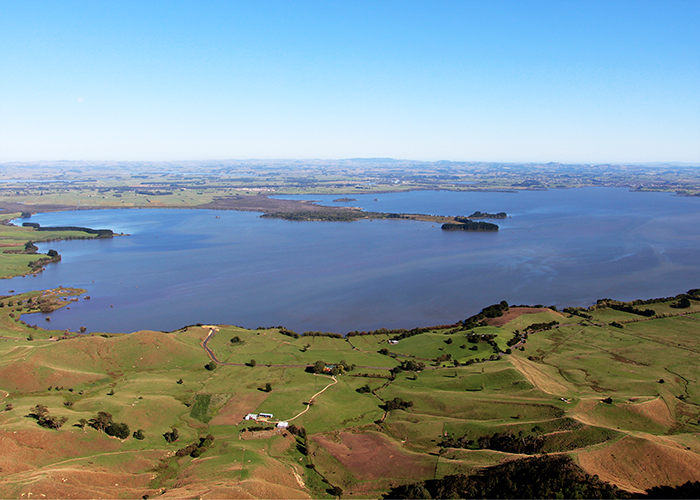Lake Waikare

Lake Waikare
Lake Waikare is the largest lake in the lower Waikato catchment, with 3,442 hectares of open water. It has an average depth of 1.5 metres and a maximum depth of 1.8 metres. Lake Waikare has very poor water quality and is hypertrophic. There are no large submerged aquatic plants growing in the lake.
In 1965 the lake level was lowered by one metre. This was in accordance with the Lower Waikato Waipa Flood Control Scheme and followed the construction of an outlet gate.
Lake Waikare discharges to the Whangamarino Wetland from the artificial Pungarehu Canal. The lake is managed under a strict seasonal fluctuation regime of approximately 0.3 metres.
Water quality in Lake Waikare
In the 1870s Lake Waikare appears to have had native aquatic plants present and clearer water than we see now. Aerial photographs suggest that by the 1940s the lake had become turbid. This was probably due to sediment and nutrients entering the lake as a result of land clearance within the lake catchment.
In 1965, flood control works were completed, lowering the average level of the lake by about one metre. The wetlands surrounding the shores of Lake Waikare have been reduced by two-thirds (67 per cent) since 1963. All the above factors have affected the lake’s water quality.
Results from water quality monitoring carried out by Waikato Regional Council show that Lake Waikare is hypertrophic, with extremely high levels of inorganic suspended sediments.
Check out our Nutrient Enrichment of Shallow Lakes indicator and its data for Lake Waikare.
Changes in water quality over time
Environment Waikato monitored water quality at Lake Waikare every two months between February 1993 and December 2004. Monitoring showed:
- significant increases in Total nitrogen and Total phosphorus
- an increase in Chlorophyll a
- highly variable water clarity (as Secchi depth).
Levels of suspended sediment within Lake Waikare are extremely high. This reduces the amount of light that can penetrate into the water, and probably limits the amount of plant life that can survive in the lake.
The high sediment levels are probably due to:
- erosion within the Matahuru catchment
- the lowering of the average lake level
- re-suspension of sediment from the lakebed by wave action
- the collapse of submerged aquatic plants between 1977 and 1979.
There are no submerged aquatic plants (macrophytes) in Lake Waikare at present.
Can the lake’s water quality improve?
Restoration of Lake Waikare and the re-establishment of submerged aquatic plants (macrophytes) is difficult under the current water level regime. This is because Lake Waikare is very shallow and sediment on the lake bottom is easily stirred up and re-suspended.
Other factors that restrict the restoration of Lake Waikare include:
- contaminants from the Matahuru catchment
- discharges from the Te Kauwhata wastewater treatment plant.
Waikato Regional Council is working with local landowners, iwi, community groups and other agencies to improvement the health of Lake Waikare. We are also working with landowners in the Matahuru catchment to protect streams flowing into the lake. This will help reduce the amount of sediment reaching the lake.




To ask for help or report a problem, contact us
Tell us how we can improve the information on this page. (optional)